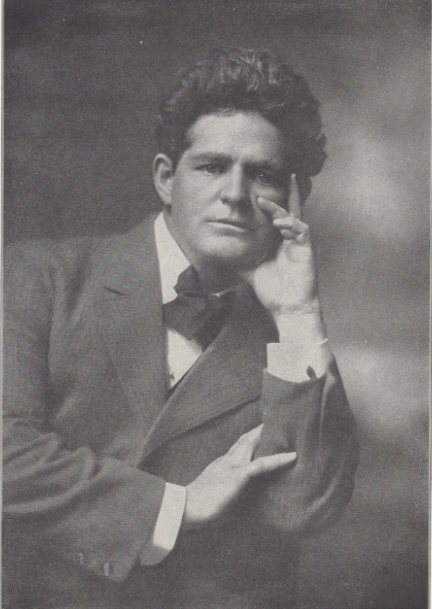George Grey Barnard (George Grey Barnard)

Artist. A sculptor, he was born Bellefonte, Pennsylvania, and grew up in Kankakee, Illinois. He first studied at the Art Institute of Chicago, and attended the Ecole des Beaux-Arts while working in P. T. Cavelier’s atelier in Paris in 1883–1887. He resided in Paris for twelve years, then returned to America in 1896. His early work exhibits a strong Rodin influence. Among his principal works are, “The Boy” (1885); “Cain” (1886) (later destroyed); “Brotherly Love,” sometimes called “Two Friends” (1887); “Two Natures” (1894, in the Metropolitan Museum, New York); “The Hewer” (1902, at Cairo, Illinois); “Great God Pan” Dodge Hall quadrangle, Columbia University campus, New York City; the “Rose Maiden”; “Maidenhood”. He was commissioned by architect Joseph Huston to create the large statuary groups at the Pennsylvania State Capitol’s main westerly entrance. Barnard received his commission in 1901 and his statues were completed in 1911, five years after the Capitol was dedicated. They were shipped to Harrisburg and hoisted into place by the Piccirilli Brothers, the family of marble workers who carved the figure of Abraham Lincoln at the Lincoln Memorial. The statues were welcomed with much fanfare and critical acclaim; however, the statues’ nudity proved too much for some residents of Harrisburg. To appease the citizens, Barnard designed marble sheaths to cover the statues and concerns over modesty were quieted. A huge statue of Abraham Lincoln, in 1917, was the subject of heated controversy because of its rough-hewn features and slouching stance. The first casting is now in Manchester, England, the second in Cincinnati, Ohio and the third in Louisville, Kentucky. The Great God Pan, was originally intended for the Dakota Apartments on Central Park West. Alfred Corning Clark, builder of the Dakota, had financed Barnard’s early career; when Clark died in 1896, the Clark family presented Barnard’s Two Natures to the Metropolitan Museum of Art in his memory, and the giant bronze Pan was presented to Columbia University, by Clark’s son, Edward Severin Clark, 1907. Interested in medieval art, Barnard gathered discarded fragments of Gothic architecture from French villages. He established this collection near his home in Washington Heights, New York City, in a building that he called the Cloisters. It was purchased by John D. Rockefeller Jr. and forms part of the nucleus of The Cloisters collection. Barnard was one of the most renowned sculptors of his day. Though he did numerous other sculptures and statues, both at home and abroad, it was his final wish that he could be interred near the Harrisburg Capital sculptures. He was interred at Harrisburg Cemetery, about a mile from what he considered his greatest work. (bio by: Michael Milliken) Family links: Parents: Joseph Hoke Barnard (1838 – 1926) Martha Grey Grubb Barnard (1842 – 1919) Children: Vivia Grey Barnard (1895 – 1986)* Monroe Grey Barnard (1904 – 1987)* Siblings: George Grey Barnard (1863 – 1938) Evan Grey Barnard (1864 – 1938)* Martha Barnard Cooper (1884 – 1928)* *Calculated relationship
Born
- May, 24, 1863
- USA
Died
- April, 04, 1938
- USA
Cemetery
- Harrisburg Cemetery
- Pennsylvania
- USA

